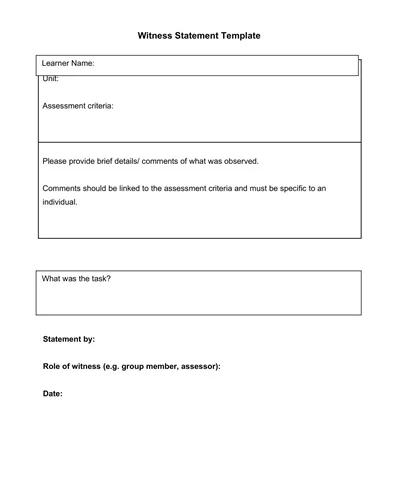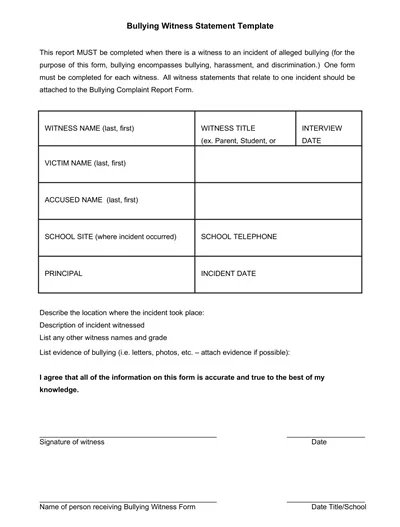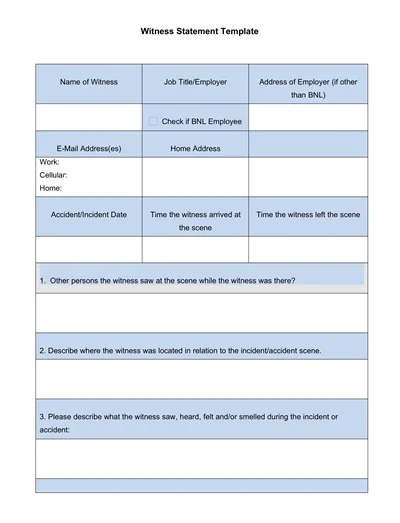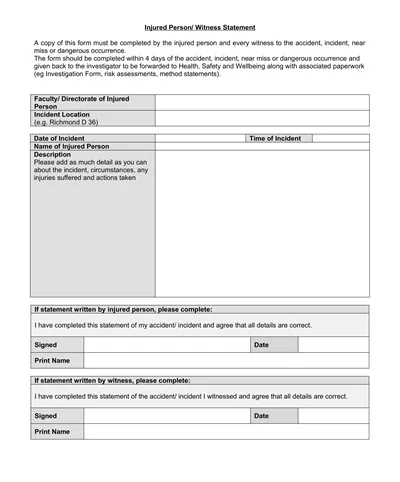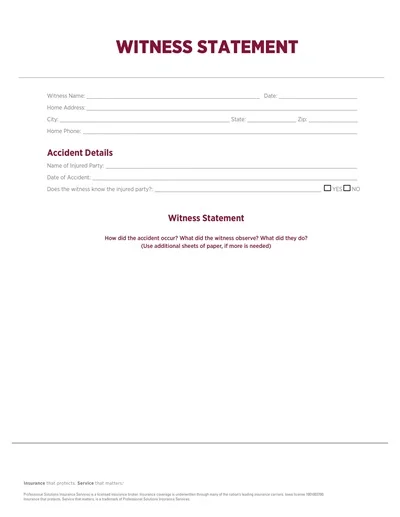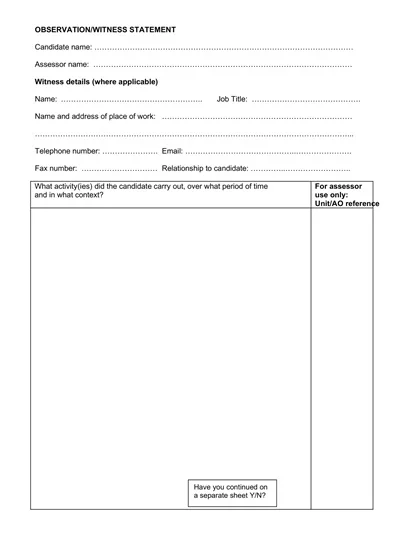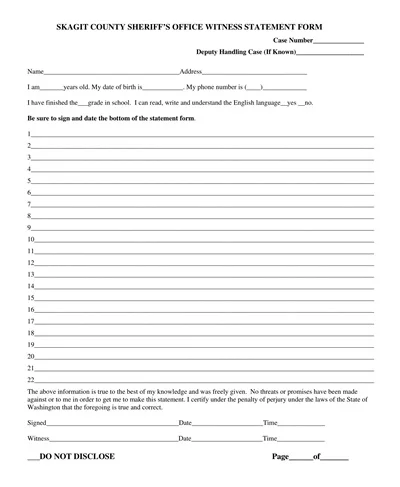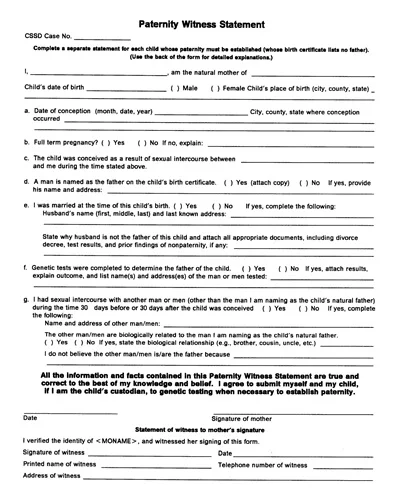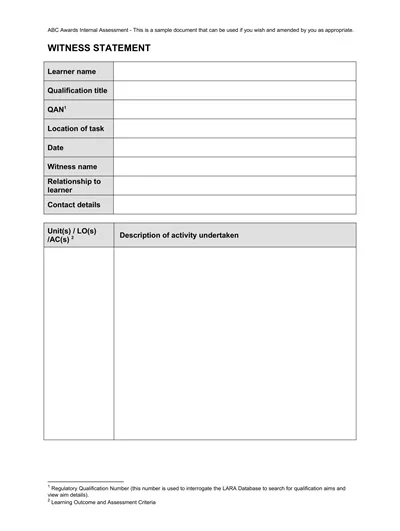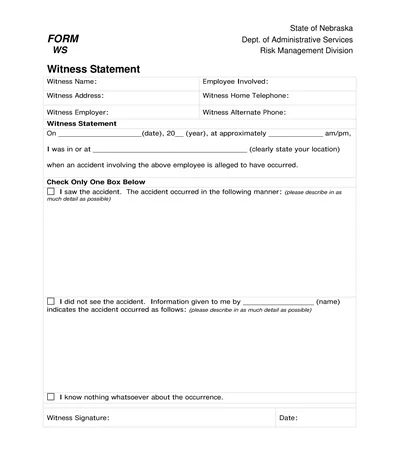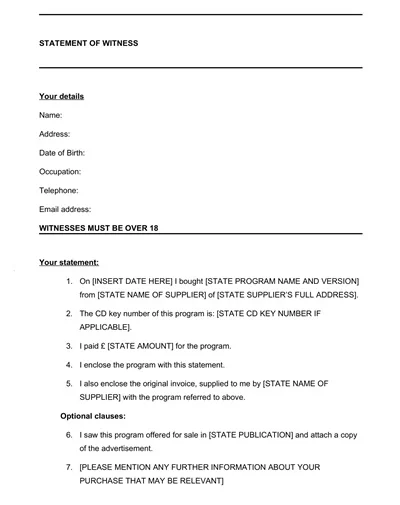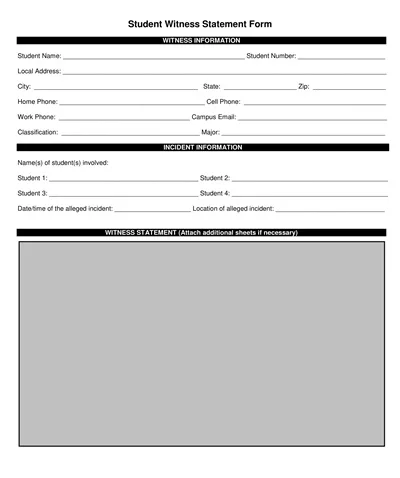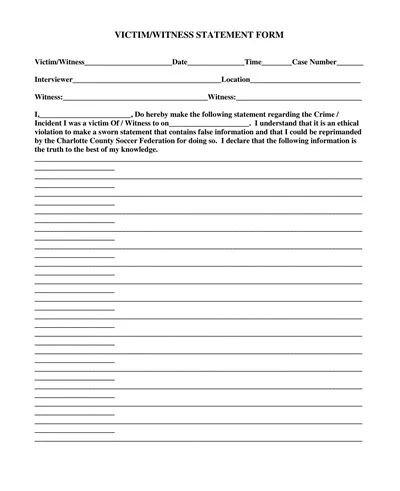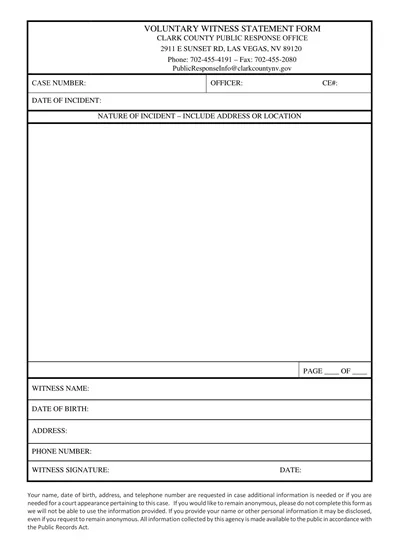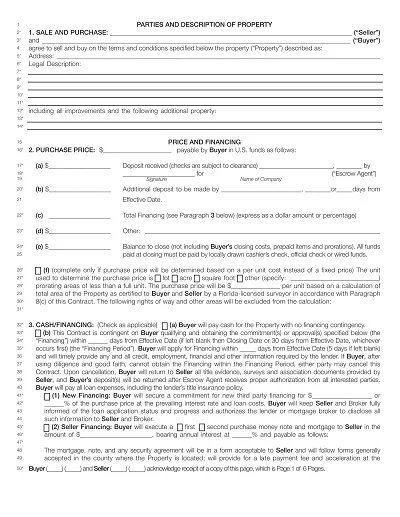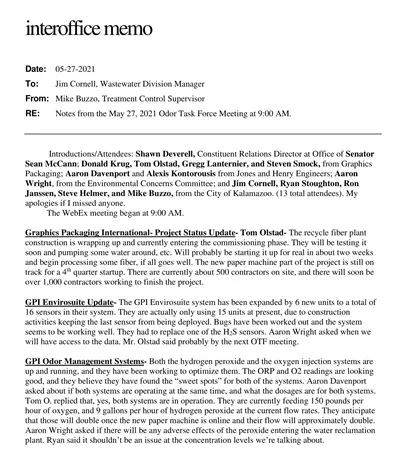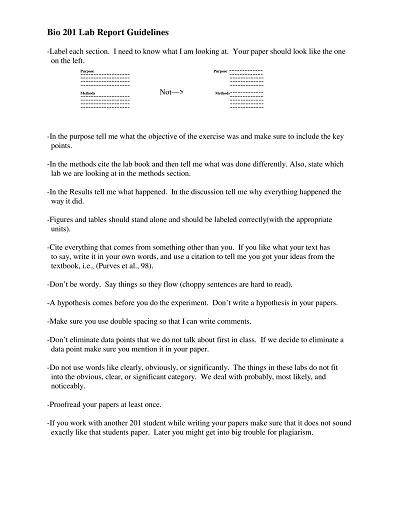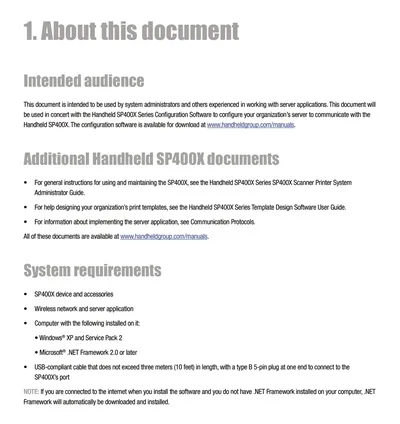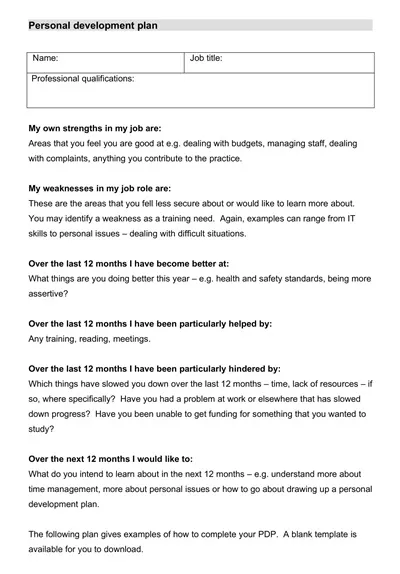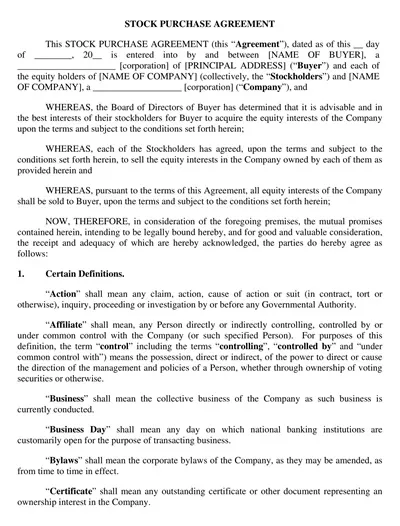A witness statement form is a document of an account or evidence given by an individual who actually has information of an event, an incidence, or circumstances of a given situation. It reveals the witness’s events narrated or felt account and put into a clear legally admissible manner most commonly embraced in legal investigations or hearings.
A common format for such a memo contains the general data on the witness and the particular situation that was observed by him, the actions made by the witness, and the statement that the information is true.
Download Free Sample Witness Statement Templates
What is a Witness Statement?
A Witness Statement is a legal document in which the individual gives his or her testimony or details of the particular circumstances in regard to the specific occurrence, situation, or state. It is a testimony and takes a written format that captures what the witness personally observed, heard, or underwent.
In legal proceedings, one is privy to this statement to offer proof and substantiate the case being made. A witness statement may need to be signed by the individual giving it to confirm that the contents of that statement are indeed true and accurate; it can also be used in court to challenge the witness on certain evidence.
Components of a Witness Statement
The following components comprise a WITNESS STATEMENT that is comprehensive and efficient.
These include:
- Identification of the Witness: The personal details of the person who gave the statement are their full name, their physical address, their date of birth, and the nature of their job.
- Date of the Statement: The date this witness statement was made.
- Connection to the Case: The report clarifies how or what the witness is to the case or the parties to the case.
- Factual Narrative: The observations made at a specific time, type of event, or case, including the date and time of occurrence, place, and activity that has been seen.
- Evidence: Any physical or electronic evidence that the witness has in relation to the facts of the case, which may be photographs, emails, documents, etc.
- Statement of Truth: The words the interpreter should say after ensuring that they have verified that the answers tendered are truthful as per the knowledge and research done on the issue by the witness.
- Signature and Date: The part of this statement shows that the witness has read the statement and is true and correct by putting their signature and date next to it.
Types of Witness Statements
It is important to discontinue the term ‘secondary’ when referring to witness statements. These can be categorized in many forms depending on the source, content, and purpose in different settings like legal processes, studies, or investigations.
Below is a brief outline of common types of witness statements:
1. Eyewitness Statements
These are original inflated narratives from people who witnessed or were part of the incident. They play a significant role in offering raw and real-time information that might be relevant in a criminal case or related probe.
2. Expert Witness Statements
Damages are assessed by those who have certain specialized knowledge or experience in the area that is pertinent to the given case. Speaking of these statements, they are intended to explain certain aspects, given a technical or professional lingo, as well as help to comprehend the issues in question.
3. Character Witness Statements
Based on this, the following emphasizes the character and behavior of a person in the legal process. Res gestae witnesses are permitted to testify but do not specifically speak about the case facts instead, they reveal the character of the person and his or her regular behavior.
4. Victim Impact Statements
Provided by the victims or their next of kin, these write-ups chronicle the impact of the crime in eradicating the lives of the clients. They are commonly applied where a person who committed an offense needs to be sentenced to understand the effects of the offense.
Tips for Writing a Witness Statement
It is always important to write a witness statement effectively; bearing imprecision in mind is always a key factor. Below are some practical tips to guide you through the process:
- Start with Your Details: When developing self-promotion skills, one should write a letter that contains general information about him or herself by putting his or her full name, address, and occupation at the topmost part of the letter. It is useful to know who is making the statement through Constructing Sources as this assists in identifying the source of the statement.
- Date the Statement: The statement should also be dated; preferably, the date should appear at the header portion of the document with the details of the person taking the statement. It is important to know that, in case of making several statements on different dates, the dates will differentiate them.
- Use Chronological Order: Group the information in a way that clarifies which event occurred first, second, and so on. It helps to keep your narrative organized to ensure that there is no confusion because of winding and twisted ideas.
- Be Specific: When citing incidents or conversations, one should provide precise dates, times, and places if any are available. The more specific you get, the more useful it will be to people who might read your statement.
- Use Plain Language: It is important to not use legal terms and not use philosophical terms and phrases. It simply means to keep the statement as clear as possible that anyone with comprehensible ability can comprehend.
- First-Person Perspective: Express it from your point of view and use only I saw, I heard, etc It is a statement of an event based on your knowledge and experience.
- Avoid Opinions and Stick to Facts: A journalist is the first to tell what he or she knits, saw, heard, or did. Do not give one if you have not been asked to explain an event or given a particular stance.
- End with a Statement of Truth: At the end of your witness statement, you are expected to affirm that whatever you have stated therein is the truth to the best of your knowledge and belief. This may be a sentence such as ‘’In my view, the facts presented herein this witness statement are accurate.’’.
- Sign and Date: Finally, you should sign and date the bottom right hand of the form as a sign of verification and confirmation of a true receipt.
To sum up, following these recommendations can create a clear and concise witness statement and share all the important information about your observations or testimonial events.
Why Is a Witness Statement Important?
this is important because a witness statement is an official record of a person’s testimony in an event to provide a first-hand account that always has a very powerful statement on the determination of the case. This document represents the eyewitness’s conceptualization and perception and provides much-needed clarity and depth that might otherwise escape written or recorded formats of testimony.
Such significance is further escalated when the witnesses cannot attend the court in person. As such, the decision-makers will be able to hear the testimonies. Also, witness statements can be quite useful to legal teams for reviewing for facts they might need to present to their advantage, or for them to look for gaps or loopholes in their cases or those of their adversaries.
How to Create a Witness Statement Template
Developing a witness statement template involves designing meaningful and relationship-filled structures into the template to ensure that all nuances of the witness statements are captured as required.
Here’s a step-by-step guide:
1. Header and Identification
- Title: The first line of the text should be quite provocative, such as “The author’s witness statement.
- Case Details: Provide the case title, number, and other identification, which should be printed on the top right-hand corner of the document.
- Date: Make sure to pinpoint the date of the statement being made. It is also recommended that it be done clearly.
2. Witness Information
- Full Name: The full name of the man who, in his statement, reported seeing a man breaking into a car.
- Address: This recounts the witness’s present place of residence.
- Contact Information: Primary mode of contact identification details like telephone number and electronic mail address.
- Relationship to the Case: Discuss how the witness may be associated with the case, such as working with witnesses, parties, or law enforcement agents.
3. Statement Body
- Chronological Order: It is useful to help the witness iterate the events described chronologically if possible.
- First-Person Narrative: It is imperative to adopt a first-person narrative since it gives an account similar to the eyewitness’s.
- Factual Information: Regarding basic guidelines, the teacher should emphasize that focusing on facts rather than one’s opinion is better.
- Specific Details: Additional details, including dates, times, places, and other similar specifics, must be incorporated into the statement.
4. Declaration and Signature
- Declaration Clause: Add a clause allowing the witness to state that the information provided is true as per his/ her knowledge and belief, but the witness understands that such a statement has certain legal repercussions.
- Signature: A space for the witness’s name, his/her title or position, and the date when he/she signed the document.
5. Witness Consent
- Consent for Use: As for the witness’s statement, acquire consent from the witness if the statement can be used in court.
This template provides an efficient structure for all important data collection that helps in the precise and accurate documentation of evidence as demanded in legal cases.

